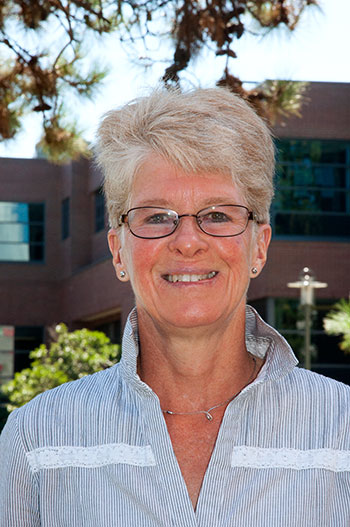
Assoc. Prof. of Nursing Kathy Rush
Photographs may lead to better treatment and care for patients in rural communities, a UBC Okanagan study shows.
Prof. Kathy Rush, who teaches in UBC Okanagan’s School of Nursing, recently completed a study with older patients who live with atrial fibrillation (AF)—a chronic condition that causes irregular heartbeat, fatigue, dizziness and shortness of breath.
For her study, Rush gave digital cameras to 10 participants, at varying stages of health, who lived independently in towns with populations under 7,000. Participants were asked to take daily photos and mail in a memory card every two weeks for six months.
“These photo journeys give patients a voice and makes visible what can be invisible when someone is suffering,” says Rush. “You don’t always get the full story or picture of what is really going on in their lives. These photos gave us considerable information about the environmental context of living with an illness in rural communities, where there is limited access to services.”
While many of the photos portrayed people waiting for, or travelling to appointments, Rush says other images told a much more stark story.
“The photos gave us access to their days, to things that wouldn’t be reported in a doctor’s office, or on a medical chart, but were an important part of their day-to-day care,” says Rush. “The images brought to life their social supports and the gaps in service.”
On days when patients felt healthy, often the images were of places in their community or the participants outside doing something they enjoyed. On symptomatic days, images were of pills, reminders of medical appointments or people resting at home.
Rush says one man took a series of photos over several hours of a clock while he experienced symptoms—identifying how long he endured discomfort. Other patients took photos of their caregivers or the social support they had in the community (people who drove them to medical appointments) or trips to larger medical facilities.
The photos, Rush says, can help health professionals understand the everyday healthcare journey of residents who live with a chronic condition.
“There is certainly a rural context, like being transferred by ambulance or traveling for hours to get to a health clinic,” says Rush. “We knew we couldn’t capture their health care journeys with words alone and this project really opened windows into their lives.”
Rush is recommending that photo journeys be used more frequently for older, rural patients, regardless of their health condition. Photographs provided a powerful tool for the participants and Rush says they have been able to tap into nuances and subtleties of living with AF that patients may not share with health professionals or family members.
Rush’s research was recently published in Chronic Illness and was made possible by funding from the Canadian Institutes of Health Research.
—30—